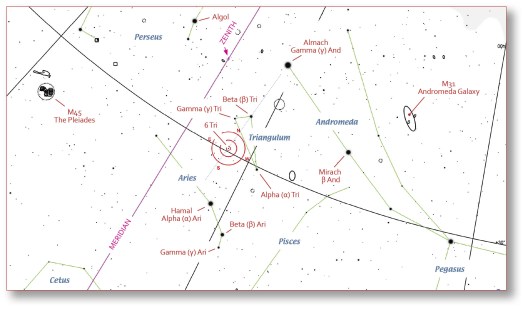
The Solar System
Mercury ended November lost in the solar glare, but as it sweeps rapidly through its orbit, it will become increasingly visible as a pre-dawn target. After about the first week of December, the planet will sit almost 10° above the southeastern horizon at 6:30 AM, roughly 40 minutes before dawn. (By then, it will look like a fat crescent in telescopic views.) A week later, Mercury reaches its widest angle, as we see it, from the Sun (known as “greatest elongation”), and sits slightly higher at the same hour, brightening by about a half-magnitude as well. After that, the planet will appear closer to the Sun each day. Look for a close conjunction with Jupiter on the morning of the 21st, when the two planets will lie within a degree of each other.
Late-November views of Venus were spectacular, even with the naked eye—the planet’s sheer brilliance in a dark sky made a 5:30 AM rise worthwhile. (Venus was so bright, it made it hard to recognize a nearby, seemingly wan star for what it really was: 1st‑magnitude Spica.)
Happily, the views continue in December—though the planet’s brightness diminishes slightly and the disk appears a bit smaller, it still presents a terrific target, Continue reading “December Skies 2018”
